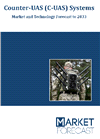Indra demonstrated during the ATLAS25 military exercises held in Huelva from October 20 to 24 that it possesses one of the most advanced and comprehensive capabilities on the market to detect, identify, and neutralize drone-based aerial attacks.
The ATLAS25 exercise, organized at the Médano del Loro Maneuver and Firing Range (Huelva) by the Army’s Maneuver Support Command (MAM) and led by the 71st Anti-Aircraft Artillery Regiment, was one of the most ambitious conducted in Spain in recent years.
Under the leadership of the Defense Staff (EMAD), Spanish Forces tested their current capabilities to neutralize aerial attacks and assessed future developments, evaluating the maturity of various technologies under development by the defense industry. It included the participation of units from the Army, the Navy, and the Air and Space Force, along with units from the Civil Guard (GC) and the National Police Corps (CNP).

Market forecast by Region, End-User, and Mitigation Type. Country Analysis, Market and Technology Overview including Critical Raw Materials, Opportunity Analysis, and Leading Company Profiles
Download free sample pages More informationIndra stood out in the maneuvers by deploying systems in both the naval and land components of the exercise.
Its naval counter-drone system, CROW, equipped with radar and electronic defense systems, collected critical data that was integrated with information gathered by various ground-based systems through the command and control system developed by the company.
On land, Indra showcased the capabilities of the ARACNE counter-drone system, developed in collaboration with EM&E Group, which will be delivered to the Army before the end of the year. The solution’s command and control system excelled in its ability to fuse data from multiple sensors—both proprietary and third-party—and accurately identify the type of threat and select the most appropriate response in each case.
Among the proprietary sensors used during the exercises was the Nemus radar, a compact AESA radar specifically designed by the company for tactical applications such as counter-drone operations.
All the capabilities deployed by Indra during the exercise are complemented by a broader offering that already distinguishes the company as one of the most advanced in Europe in this field, positioning it as the company with the greatest potential to accelerate the implementation of the future European anti-drone wall.
Indra is one of the leading manufacturers of air defense radars in Europe, covering long, medium, and short ranges with fixed, deployable, or highly mobile systems designed to evade enemy fire. These capabilities are further enhanced by space object detection radars, essential for neutralizing ballistic missile attacks that follow suborbital trajectories.
All of this is reinforced by one of the most sophisticated air defense command and control systems currently available in Europe—Airdef—and an Anti-Aircraft Artillery Operations Center (COAAAS), which is currently in use by the Spanish Army. Together, these assets enable the company to offer comprehensive protection across all levels.